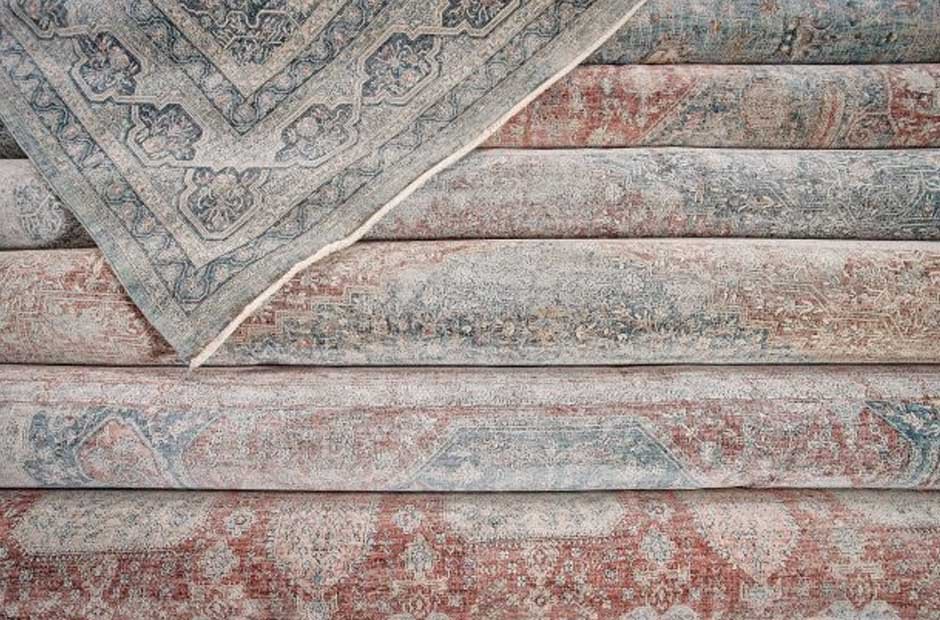Looking at a rug, you focus on the colors, texture, and its beauty. But have you ever stopped and wondered what went into making it?
The creation of a rug is an art form that intertwines tradition with meticulous skill. It’s a journey from a simple knot to a masterpiece.
Each rug carries a story, woven into its very fibers by artisans who spend years mastering their craft. Standing on a rug, you’re privy to centuries of cultural history and the pinnacle of craftsmanship.
The Art of Rug Weaving
Rug weaving is a convergence of tradition and creativity that results in functional art.
Historical Origins
An ancient craft, rug weaving dates back to the 5th century BC. These historical pieces originated in the Persian and Central Asian regions, where nomadic tribes would create them for practical needs and to reflect their cultural narratives.
Materials and Textures
In rug crafting, the choice of materials is vast. The materials affect the texture and durability of the finished piece.
Wool is renowned for its resilience and its ability to hold dyes, while silk adds a luxurious sheen and fine detail.
Here’s a glimpse of the materials you might find in a rug:
- Wool: Robust and cozy, perfect for high-traffic areas
- Silk: Lustrous and soft, for intricate designs
- Cotton: Often used in the foundation of rugs due to its strength
Textures can range from smooth, tight weaves to shaggier and more robust.
Design and Patterns
The designs and patterns of rugs are as varied as the cultures they come from. They can be geometric with sharp angles, organic with curving lines, or a blend of both.
Rug designers often draw inspiration from natural landscapes, religious symbols, and historic events. When you step back, these patterns tell a visual story, one woven stitch at a time.
| Popular Pattern Styles | Description
|
| Floral | Inspired by nature, often intricate and soft |
| Geometric | Bold lines and shapes, reflecting symmetry |
| Pictorial | Depicts scenes or figures, telling a story |
From Creation to Completion
The process of crafting a rug is intricate and involves meticulous attention to detail.
Here’s an inside look at the journey from raw materials to the final piece you might cherish in your home.
The Crafting Process
Crafting a rug involves several steps.
Design Planning
This is the first step in creating the design for the rug. This is traditionally done by hand, but modern times have led to using computer software. The design includes the pattern, color scheme, and the size of the rug.
Material Selection
As we explained previously, rugs can be made from a variety of materials. A rug maker takes into consideration the rug’s feel, durability, and the price.
Spinning and Dyeing
Now that all of the plans are laid out, it’s time to begin crafting. First, the fibers are spun into yarn. For natural fibers, this process may involve cleaning, carding (aligning fibers in the same direction), and then spinning the fibers into yarn. Once the yarn has been spun, it is dyed.
Weaving
Once the loom is set up with the dyed yarn, the threads are woven by hand or machine. Hand-knotted rugs, where each knot is tied individually, are highly valued for their craftsmanship and durability.
Trimming and Washing
Once the weaving is finished, the rug is trimmed to make sure it’s even. It’s then washed to remove any dirt or excess dye. Washing also helps set the colors.
Stretching and Drying
The rug is stretched on a frame to dry, which helps maintain its shape and size.
Finishing Touches
Any final touches, such as additional trimming, carving, or embossing, are completed to enhance the rug’s texture and pattern.
This entire process can take several weeks to months. It all depends on the size, complexity of the design, and the weaving method used. The allure of exquisite rugs is largely due to the time and effort put into creating them.
Conclusion
Knowing the history and the craftsmanship behind exquisite rugs, you’ll no longer simply admire the colors and texture. No, you’ll consider the time and effort that went into designing and weaving the piece. And they really are beautiful.







